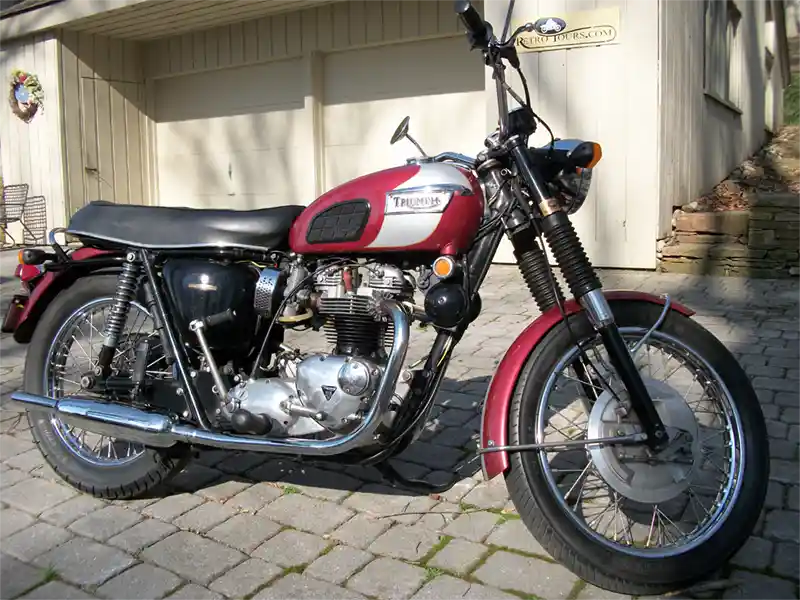
Sometime in the early 90’s, a neighbor approached me about buying his ratty Triumph hopper. The price was right, and it actually ran. The setup was classic 60’s: extra-long front fork tubes, struts in place of rear shocks, “hog” rear wheel, and a wee tiny shovel seat bolted to a gaping hole that appeared to have been gouged into the rear fender with a blunt screwdriver. Naturally, these features were topped off with ape hanger handlebars and a paint job that could have been applied with a broom. Sheesh!
Even though it was fairly unpleasant to ride, the essential Triumph character still shone through. I kept the bike in running condition and, gradually over the years, painstakingly transformed the machine back into the classic that lay hidden within. In the process, I noticed that the bottom end of the motor was from a 1972 model with an upgraded five-speed transmission, while the rest of the machine was originally a 1970 TR6. No matter, I always wanted a Bonneville, so I took things in that direction.
These projects are almost never worth the expense involved, and this case is no exception. Still, the investment was spread over a decade, the restoration work was fun and the bike could be ridden. For me, these factors outweighed the cost. In the interests of usability, I actually massaged things to beyond stock, including a lovely factory-correct paint job, quartz lighting, functioning turn signals, and modern horns and tires. Oil leaks have been tough to resolve, but I knew I was winning the battle when some of the engine bolts started to rust for the first time. In the end, the machine evolved into a beautiful Bonneville, with the gorgeous proportions that for many, have come to virtually define the proper shape of a motorcycle.
And it is even better to ride than to look at. Combined with wide U.S.-spec handlebars, the narrow waist and light weight are a revelation. This Bonny steers wonderfully, and is a real pleasure at relaxed to moderate speeds. The seating position is open, upright and natural. The exhaust note is candy to the ear, harmonizing with the gentle clatter of gear-driven camshafts and tappets. Gear-shifting is precise, virtually impeccable, the ratios perfectly suited to the broad torque curve. Even kick-starting is easy, when the correct cold-start procedure is followed (tickle, tickle). Does it vibrate? Of course, but so does my easy chair. Vibration is never annoying at sensible engine speeds.
Push too hard, though, and you will discover the limitations of its primitive (by modern standards) fork and brakes, as well as the comfort limits for engine vibration. Even then, you will be politely warned well before you become alarmed. Apparently, good manners extend to motorcycles as well as citizens of the British Empire. Simplicity and balance like this resulted from designer Edward Turner’s passionate dedication to doing the most with the least, along with the steady refinement that comes with a lengthy production run. A few hundred miles on this bike, and you will understand the Bonneville Legend, long may it live!


